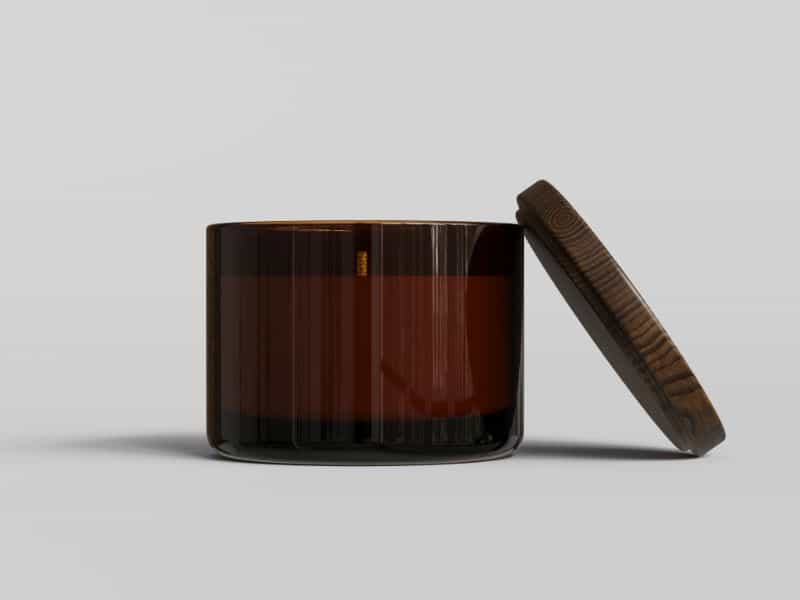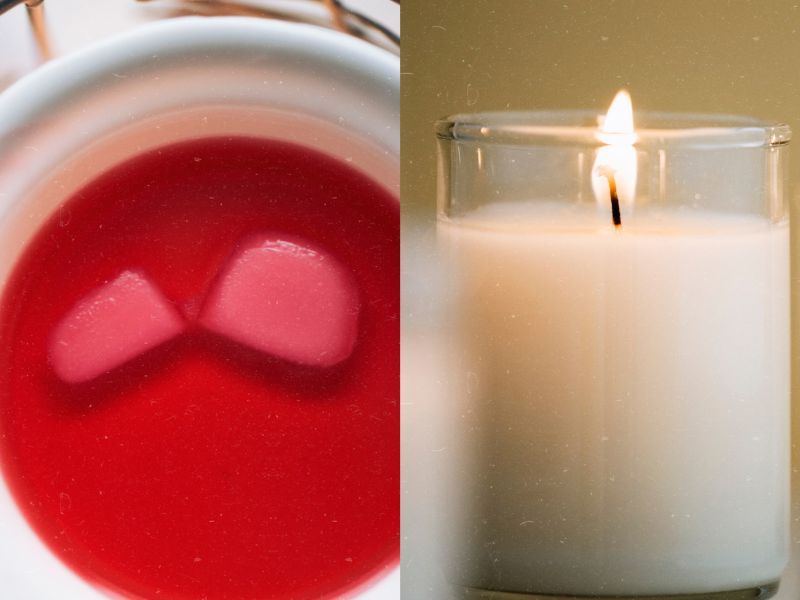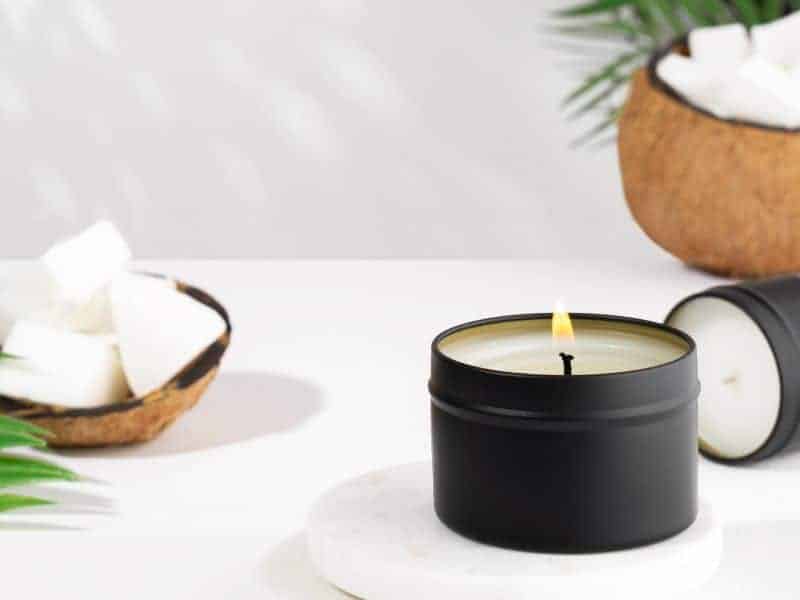Candles enhance our homes with warmth, light, and delightful fragrances. But have you ever wondered if making candles at home is more cost effective than purchasing them from a store? Let’s dive in and discover which option is best for you, your wallet, and the environment.
Candle making is cheaper than buying candles. Creating candles at home can be more cost-effective, particularly when purchasing materials in bulk. Final costs depend on individual preferences, the level of customization, and the importance of eco-friendly options.
Homemade candles allow for a lot of customization, such as fragrances and colors. Candle-makers can also create unique vessels and shapes. The cost of homemade candles is largely determined by the type of wax used, wick size, and fragrance oils needed.
Factors Affecting Candle Costs
Materials For Making Candles
Wax types
Different waxes impact homemade candle costs. Paraffin, an affordable choice, is a petroleum byproduct. Soy wax, derived from soybean oil, is a popular eco-friendly option but slightly more expensive. Beeswax, a natural and long-burning wax, is the priciest choice. Palm wax, another natural option, has a unique crystalline appearance and costs fall between soy and beeswax.
Wicks
Wicks affect burn time and quality. Cotton wicks, the most common, are affordable and versatile. Wood wicks, which create a crackling sound, are pricier but add ambiance. Hemp wicks, an eco-friendly choice, burn slowly and evenly. Costs vary depending on material, thickness, and length.
Fragrance oils
Scented candles need fragrance oils. Prices range based on quality, scent, and quantity. High-quality oils produce better scents but cost more. Essential oils, a natural and often pricier alternative, can be used for a subtle fragrance.
Dyes
Add color with liquid dyes, dye chips, or pigment blocks. Costs depend on the type, quantity, and desired color intensity. Dyes are optional and can be skipped to reduce costs.
B. Store-bought candle factors
Brand
Candle prices vary by brand. Luxury brands, using premium materials and unique designs, cost more. Budget-friendly options, found in discount stores, are available but quality may differ.
Size
Size impacts cost. Larger candles, like pillar candles or large jars, usually cost more due to more wax and longer burn times. Smaller candles, like votives or tea lights, are cheaper and more disposable.
Fragrance
Scent complexity affects price. Unique or premium fragrances, crafted by perfumers, may be pricier. Unscented candles are often more affordable and suitable for those with sensitivities.
Design
Candle design influences cost. Hand-poured or artisanal candles, made in small batches, can be expensive due to craftsmanship. Simple, mass-produced designs are usually cheaper but may lack uniqueness.
Cost Breakdown: Homemade Candles
Initial Investment
Making candles at home requires an initial investment. This includes buying wax, wicks, fragrance oils, dyes, melting equipment, and molds. Starter kits are available, offering an affordable way to begin.
Ongoing Costs
Ongoing costs include replacing wax, wicks, and fragrance oils. These expenses depend on how often you make candles and the materials you choose. Reusing molds and equipment helps minimize costs.
Bulk Savings
Buying materials in bulk offers savings. Bulk purchases reduce per-unit costs, making homemade candles more cost-effective. Wholesale suppliers often provide discounts for large orders.
Customization Benefits
Homemade candles allow for personalization. Choose scents, colors, and designs to match your preferences. Customization adds value without significantly raising costs.
Cost Breakdown: Store-Bought Candles
Price Range
Store-bought candles have a wide price range. Basic unscented candles can be very affordable, while luxury candles can cost over $50. Prices depend on size, brand, and design.
Sales and Discounts
Look for sales and discounts to save on store-bought candles. Seasonal sales and promotions offer opportunities to buy candles at lower prices. Signing up for store newsletters may provide additional savings.
Quality Considerations
Quality varies among store-bought candles. Cheaper candles may use lower-quality materials or burn unevenly. Investing in higher-quality candles can provide a better experience, but at a higher cost.
Environmental and Health Factors
Homemade Candle Advantages
Homemade candles offer environmental and health benefits. Using eco-friendly materials like soy or beeswax reduces pollution. You can also control ingredients, avoiding harmful chemicals or allergens.
Store-Bought Candle Concerns
Some store-bought candles contain paraffin, which releases toxins when burned. Cheaper candles may also use synthetic fragrances, causing irritation for sensitive individuals. Check labels for ingredient information.
Choosing Eco-Friendly Options
Opt for eco-friendly candles, whether homemade or store-bought. Choose candles made from natural waxes, like soy or beeswax, and avoid paraffin. Look for candles with natural fragrances, like essential oils.
Final Verdict: Is Making Candles Cheaper?
Cost Comparison
Overall, homemade candles can be cheaper, especially when buying materials in bulk. However, luxury store-bought candles are more expensive, making homemade candles a budget-friendly alternative.
Personal Preferences
Whether making candles is cheaper depends on personal preferences. If you value customization and enjoy crafting, homemade candles may be the better option.
Creative Satisfaction
Making candles offers creative satisfaction that store-bought candles can’t provide. Creating unique candles to gift or display adds value beyond cost savings. Consider this when deciding between homemade and store-bought candles.
Save Money Making Candles at Home
Making candles at home is a great way to save money and enjoy the benefits of beautiful and unique candles. Here are some tips for saving money while making candles at home:
Buy materials in bulk
Buying candle-making materials in bulk can save you a lot of money in the long run. Many online retailers offer bulk purchasing options for wax, wicks, fragrance oils, and dyes. Purchasing in bulk reduces the cost per unit and ensures that you have enough materials for multiple candle-making sessions.
Reuse materials
You can reuse candle-making materials to save money. After a candle is burned down, you can melt the remaining wax and reuse it for a new candle. You can also reuse molds and wicks, as long as they are clean and in good condition.
Use recycled containers
Instead of buying new candle containers, consider using recycled materials. Old glass jars, mugs, and teacups can make unique and attractive candle containers. Not only is this option eco-friendly, but it can also save you money on purchasing new containers.
Avoid using too much fragrance oil
While fragrance oils are necessary to add scent to your candles, using too much can be wasteful and expensive. Follow the recommended usage rates for your chosen fragrance oil, and use a scale to measure out the correct amount.
Use natural ingredients
Using natural ingredients like soy wax and beeswax can save you money in the long run. While these options may be more expensive initially, they are longer-lasting than synthetic options like paraffin wax. Additionally, using natural ingredients can be better for your health and the environment.
Don’t be afraid to experiment
Candle making is an art form, and experimentation is part of the fun. Don’t be afraid to try new materials, scents, and designs to find what works best for you. You may find that you prefer certain materials or combinations, leading to more cost-effective candle making.
Frequently Asked Questions
Soy wax is a popular and cost-effective wax to use for candle making. It is a renewable resource and burns longer than other waxes.
It can be cheaper to make candles at home, especially if you buy materials in bulk. However, store-bought candles offer convenience and quality assurance.
You can save money on candle-making materials by buying in bulk, reusing materials, using recycled containers, and avoiding using too much fragrance oil.
Making candles at home is not difficult, but it does require attention to detail and following safety precautions when working with hot wax.
Candle making can be a good hobby to save money if you buy materials in bulk and reuse materials. It can also provide creative satisfaction and a unique addition to your home decor.
Conclusion
In conclusion, making candles is cheaper than buying them. In addition, making candles at home offers customization, creative satisfaction, and potential cost savings when purchasing materials in bulk. On the other hand, store-bought candles provide convenience, variety, and quality assurance.
When making your decision, consider your budget, personal preferences, and environmental concerns. Ultimately, whether you choose to make candles at home or buy them in-store, both options provide a lovely addition to any space.






